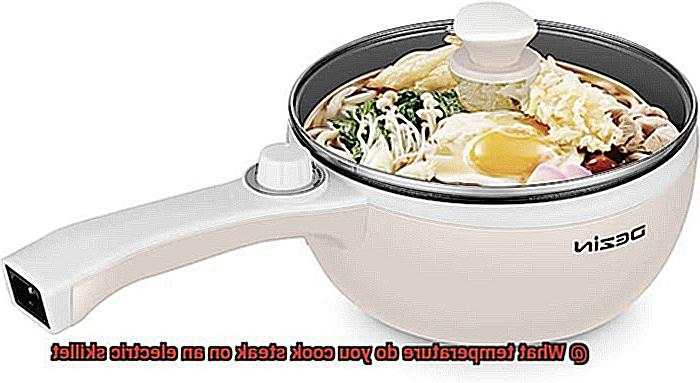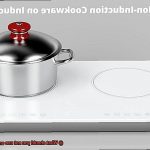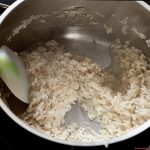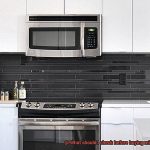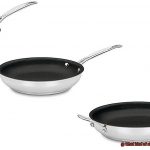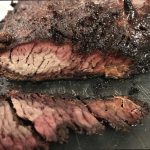Are you tired of playing a guessing game when it comes to cooking steak on your electric skillet? Say goodbye to overcooked or undercooked steaks and hello to perfectly cooked and juicy ones. With the convenience and ease of an electric skillet, cooking steak has never been easier. But what temperature should you use for that perfect sear and doneness?
Choosing the right temperature for cooking steak on an electric skillet can be tricky, but fear not. The ideal temperature range is between 375°F to 450°F. However, several factors come into play when it comes to temperature, such as the thickness of your steak, the type of cut, and personal preference.
In this post, we’ll dive deeper into the different temperature ranges for cooking various types of steaks on an electric skillet. We’ll also share tips and tricks for achieving that perfect sear and doneness no matter how you like your steak cooked.
So whether you’re a rare or well-done kind of person, keep reading to learn everything you need to know about cooking steak on an electric skillet. Get ready to impress yourself and your guests with a perfectly cooked and juicy steak every time.
Contents
What Temperature Is Ideal for Cooking Steak on an Electric Skillet?
Cooking steak on an electric skillet requires precision and attention to detail, and the ideal temperature range is crucial to achieving a perfectly cooked piece of meat. The temperature range for cooking steak on an electric skillet typically falls between 350°F to 450°F but within this range, the exact temperature will depend on the thickness of the steak and your desired level of doneness.
For thinner cuts of steak, such as flank or skirt steak, a high temperature of around 375-400°F is recommended. This high heat allows for a quick sear on both sides, creating a crispy exterior while keeping the inside juicy and tender. However, for thicker cuts of steak like ribeye or filet mignon, a lower temperature of around 325-350°F is recommended. This lower heat ensures a slower cook time, allowing the inside of the steak to cook to the desired level of doneness without burning the outside.
It’s important to note that using a meat thermometer is essential in determining the internal temperature of the steak and ensuring that it reaches your desired level of doneness. For rare steak, aim for an internal temperature of 120-130°F, medium-rare should be around 130-135°F, medium should be around 135-145°F, medium-well should be around 145-155°F, and well-done should be 155°F or higher.
When cooking steak on an electric skillet, there are some tips you can use to make sure your steak turns out perfectly. Since electric skillets have a flat surface and no open flames, you may need to flip the steak more frequently or use a little more oil or butter to prevent sticking. To achieve a delicious crust on your steak, you can also consider adding herbs like thyme or rosemary or garlic to your cooking oil. These ingredients will infuse into the meat while cooking, making it even more flavorful.
Factors That Affect the Temperature Needed to Cook Steak on an Electric Skillet
Achieving the perfect doneness can be a tricky task, but understanding the factors that affect the temperature needed will help you cook your steak to perfection every time.
Let’s start with the thickness of the steak. Thicker cuts require lower temperatures and longer cooking times to ensure that the inside is cooked evenly without charring the exterior. Conversely, thinner steaks require higher heat for a shorter duration to prevent overcooking and drying out.
Another factor that affects cooking temperature is the starting temperature of the meat. Starting with a cold steak straight from the refrigerator will require more time on the skillet to reach the desired internal temperature. Therefore, it is recommended to let your steak sit at room temperature for about 30 minutes before cooking.
The type of electric skillet being used also plays a significant role in determining cooking times and temperatures. Different skillets have varying heating capabilities, and therefore, it’s crucial to read and follow the manufacturer’s instructions for optimal results.
Lastly, personal preference is essential when it comes to determining the ideal temperature for cooking steak on an electric skillet. For rare or medium-rare steaks, lower temperatures are required, while well-done steaks need higher heat.
How to Determine the Ideal Temperature for Your Steak
Cooking a steak to perfection on an electric skillet requires careful consideration of the ideal temperature. To do this, you need to take into account the thickness of the steak, your preferred level of doneness, and the type of skillet being used. Here are five sub-sections to help you master the art of cooking steak on an electric skillet.
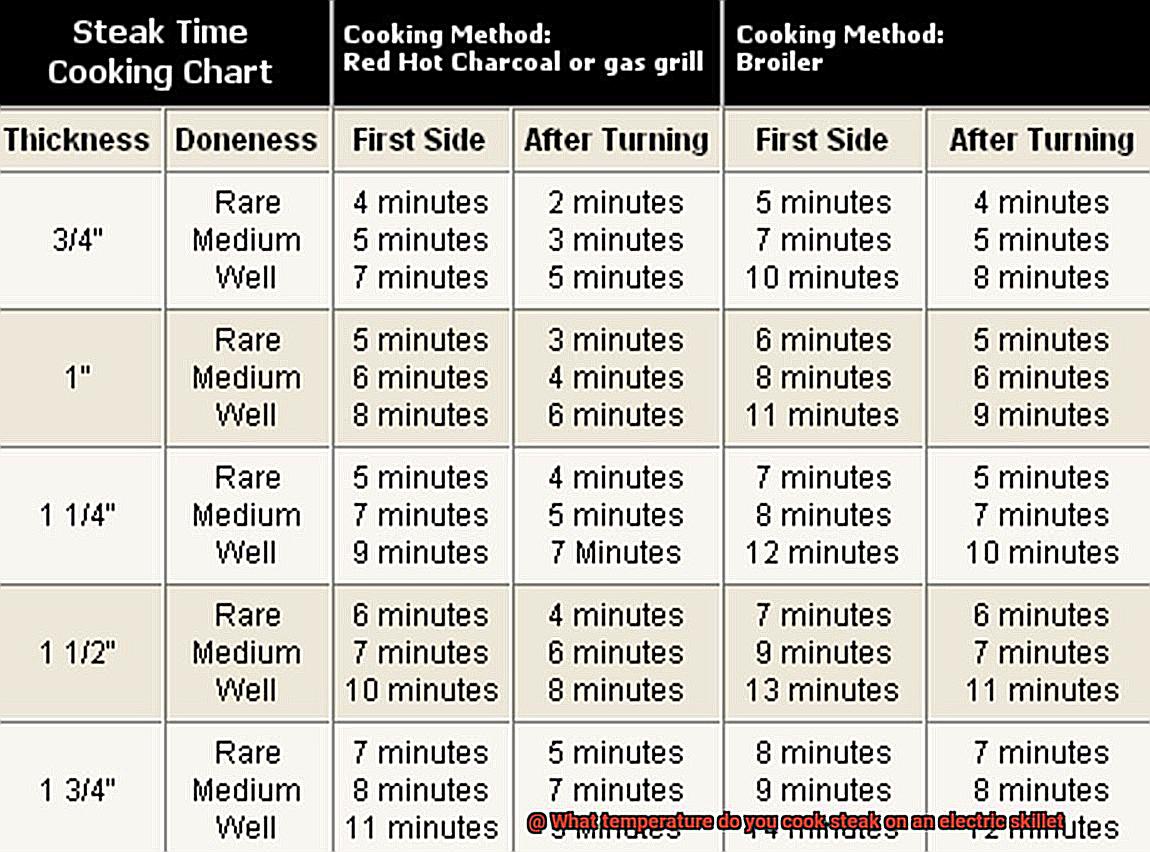
Consider the Thickness of Your Steak
The thickness of your steak is an important factor when determining the ideal temperature for cooking it on an electric skillet. A thick steak will require a lower temperature and longer cooking time to ensure that the inside is cooked through without burning the outside. On the other hand, a thinner steak can be cooked at a higher temperature for a shorter amount of time.
Determine Your Preferred Doneness
Your desired level of doneness will also affect the ideal temperature for cooking your steak on an electric skillet. If you prefer rare or medium-rare steak, you’ll want to cook it at a higher temperature to sear the outside while keeping the inside juicy and tender. However, if you prefer well-done steak, you’ll need to cook it at a lower temperature for a longer amount of time to ensure that it is fully cooked through.
Use a Meat Thermometer
Using a meat thermometer is crucial when cooking steak on an electric skillet because skillets can vary in temperature control. To avoid overcooking or undercooking your steak, aim for an internal temperature of 125°F for rare, 135°F for medium-rare, 145°F for medium, 150°F for medium-well, and 160°F for well-done.
Adjust Your Cooking Techniques
Cooking steak on an electric skillet can be different from cooking it on a gas or charcoal grill. Since electric skillets have a flat surface and no open flames, you may need to adjust your cooking techniques accordingly. For example, you may need to flip the steak more frequently or use a little more oil or butter to prevent sticking.
Let Your Steak Rest
After cooking your steak on an electric skillet, it’s essential to let it rest for a few minutes before cutting into it. This allows the juices to redistribute throughout the meat and prevents it from becoming dry. Covering the steak with foil during this time can help retain its heat and flavor.
Adapting Cooking Techniques for Electric Skillets
Adapting cooking techniques for electric skillets is easy with these tips and tricks from an expert.
First and foremost, preheating your electric skillet is crucial. Heat it up to a temperature of 400-450 degrees Fahrenheit for at least 5-10 minutes before adding your steak. This ensures that the skillet is evenly heated and prevents any sticking or uneven cooking.
To prevent burning and smoking, choose an oil with a high smoke point, like canola or grapeseed oil. Once the skillet is preheated, add a small amount of oil and swirl it around to coat the bottom of the skillet.
When it comes to cooking the steak itself, follow similar guidelines as you would on a traditional stovetop. For a medium-rare steak, cook for about 4-5 minutes per side, depending on the thickness of the steak. Use a meat thermometer to ensure that the internal temperature reaches 135-140 degrees Fahrenheit.
Finally, allow your steak to rest for a few minutes before slicing into it. This allows the juices to redistribute throughout the meat and results in a more tender and flavorful steak.
To summarize:
- Preheat your electric skillet to 400-450 degrees Fahrenheit for 5-10 minutes.
- Use an oil with a high smoke point, like canola or grapeseed oil.
- Cook your steak for 4-5 minutes per side for medium-rare.
- Use a meat thermometer to ensure the internal temperature reaches 135-140 degrees Fahrenheit.
- Allow your steak to rest for a few minutes before serving.
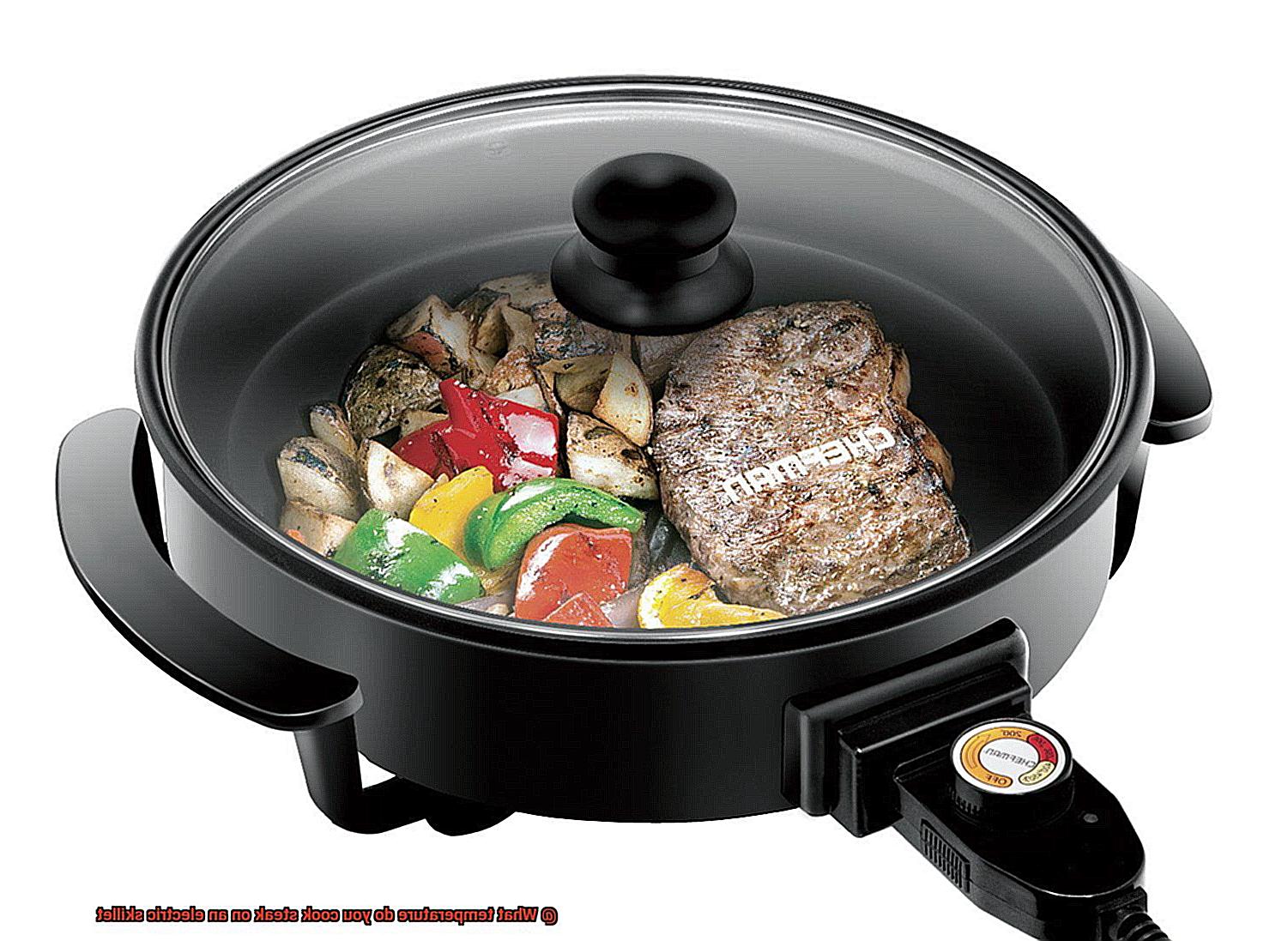
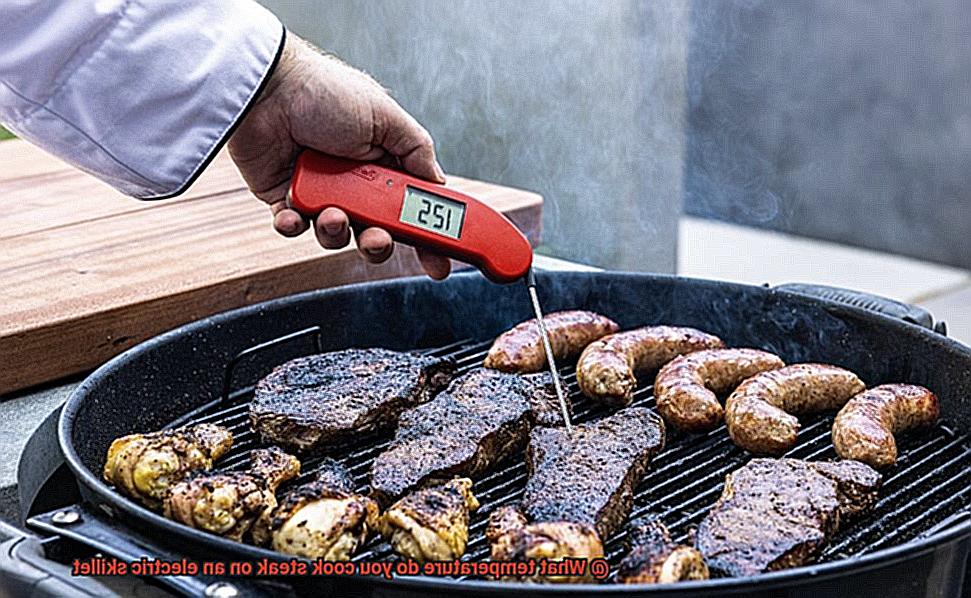
Tips and Tricks for Perfectly Grilled Steak on an Electric Skillet
When it comes to cooking the perfect steak on your electric skillet, there are a few tips and tricks that can make all the difference. To achieve a deliciously grilled steak every time, consider the following:
Preheat your electric skillet to the right temperature
The ideal temperature range for cooking steak on an electric skillet is between 375°F to 400°F. This allows your steak to sear properly and lock in its juices while also creating a nice crust on the outside. Make sure to preheat your skillet before placing the steak on it.
Let your steak come to room temperature
Before cooking your steak, let it come to room temperature for about 30 minutes. This helps ensure that the steak cooks evenly and doesn’t become tough or overcooked.
Season generously
When seasoning your steak, be generous with salt and pepper, or try adding other seasonings such as garlic powder or rosemary, depending on your taste preferences. Pat your steak dry with paper towels before seasoning to achieve a perfect sear.
Flip only once
To get those beautiful grill marks on your steak, only flip it once during the cooking process. This allows each side to cook evenly and achieve that perfect sear.
Let your steak rest before cutting into it
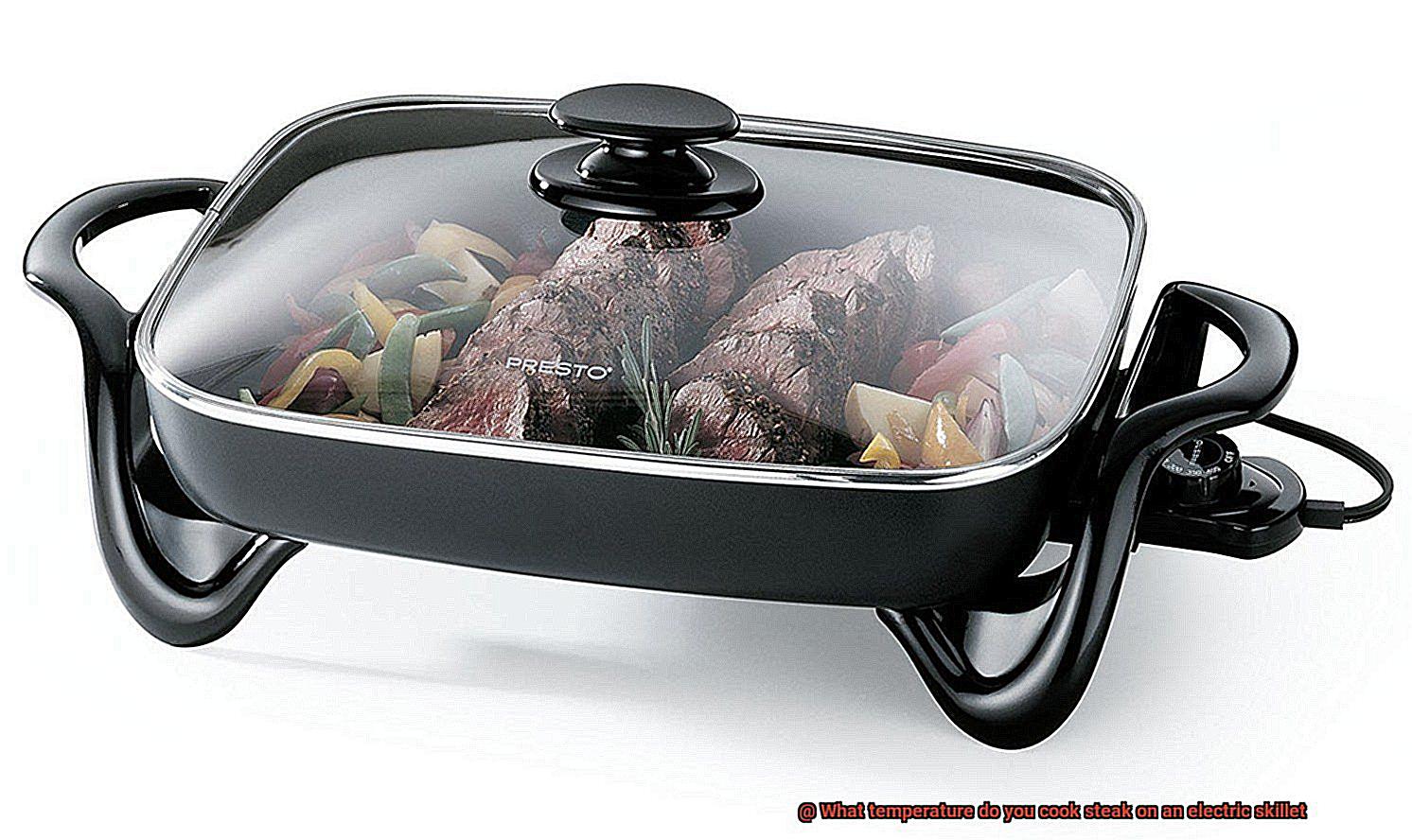
After cooking, let your steak rest for a few minutes before cutting into it. This allows the juices to redistribute throughout the meat and results in a more tender and juicy steak.
Additionally, it’s important to use high-quality cuts of steak for grilling on an electric skillet, such as Ribeye, New York Strip, and Filet Mignon. These cuts are perfect for achieving that perfectly grilled flavor and texture.
Common Mistakes to Avoid When Cooking Steak on an Electric Skillet
Many people make common mistakes when cooking steak on their electric skillet that can ruin the entire meal. But fear not, as an expert in this area, I’m here to help you avoid these mistakes and cook the perfect steak every time.
First and foremost, it’s crucial to preheat your skillet properly before cooking your steak. One of the most significant mistakes people make is not preheating their skillet for long enough, resulting in uneven heating and a sticky surface. To ensure even heating and prevent the steak from sticking, preheat your skillet for at least 5-10 minutes before cooking.
Another common mistake is using too high a temperature when cooking the steak. While it may seem like a good idea to cook the steak quickly, this can lead to overcooking and drying out the meat. To achieve a juicy and tender result, it’s recommended that you cook your steak on medium-high heat.
Seasoning your steak properly is also essential for enhancing its flavor. Don’t just sprinkle salt and pepper on your steak and call it a day. Experiment with different seasonings like garlic powder, paprika, or even Worcestershire sauce to add some extra flavor.
Lastly, don’t forget to let your steak rest before serving it. Allowing your cooked steak to rest for at least 5-10 minutes before slicing into it will allow the juices to redistribute throughout the meat, resulting in a more flavorful and tender steak.
Benefits of Cooking Steak on an Electric Skillet
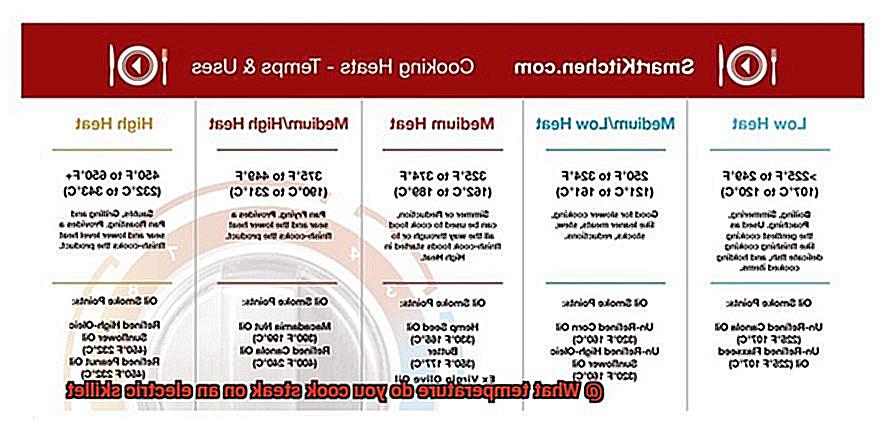
As an expert in the field, I can tell you that cooking steak on an electric skillet has numerous benefits that make it a great choice for home cooks.
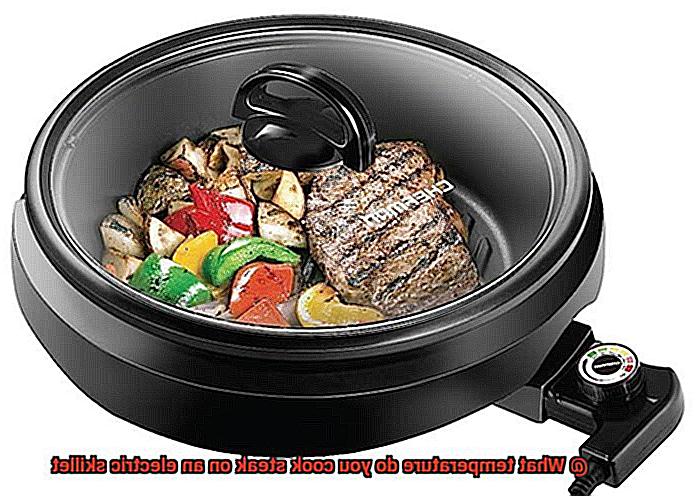
Firstly, electric skillets are incredibly versatile and can be used for a range of cooking methods, including frying, sautéing, and searing. These features make them perfect for cooking steak as they offer consistent heat and temperature control to help you achieve the perfect doneness.
One of the most significant benefits of cooking steak on an electric skillet is its convenience. Unlike grilling or broiling, electric skillets can be used indoors, making them an ideal option for those living in apartments or areas with limited outdoor space. You don’t have to worry about the weather or finding outdoor space to cook.
Cleaning up after cooking steak on an electric skillet is also a breeze. Unlike grills or broilers which can leave behind tough-to-clean grease and grime, electric skillets can be easily wiped down with a damp cloth or sponge. This saves time and ensures that your skillet stays in good condition for longer.
Electric skillets also offer precise temperature control when cooking steak, allowing you to achieve your preferred level of doneness every time. Whether you enjoy your steak rare, medium-rare, or well-done, an electric skillet allows you to adjust the temperature to your liking.
Finally, cooking steak on an electric skillet is a healthier option compared to grilling or broiling. Electric skillets use less oil and fat, resulting in a less greasy and fewer calorie meal overall.
kqA4itLG_lg” >
Conclusion
To sum it up, using an electric skillet to cook steak is a game-changer for home chefs who crave the perfect sear and doneness without the hassle of outdoor grilling. Typically, the ideal temperature range for cooking steak on an electric skillet falls between 375°F to 450°F. However, several factors such as steak thickness, cut type, and personal preference come into play when determining the right temperature.
Achieving a perfectly cooked steak every time requires taking these factors into account and adjusting your cooking techniques accordingly. To ensure success, you should preheat your skillet properly, use high-quality cuts of meat, season generously, flip only once, and let your steak rest before cutting into it.
Cooking steak on an electric skillet offers numerous benefits such as convenience, versatility in cooking methods, precise temperature control, easy cleanup, and healthier meal options.

